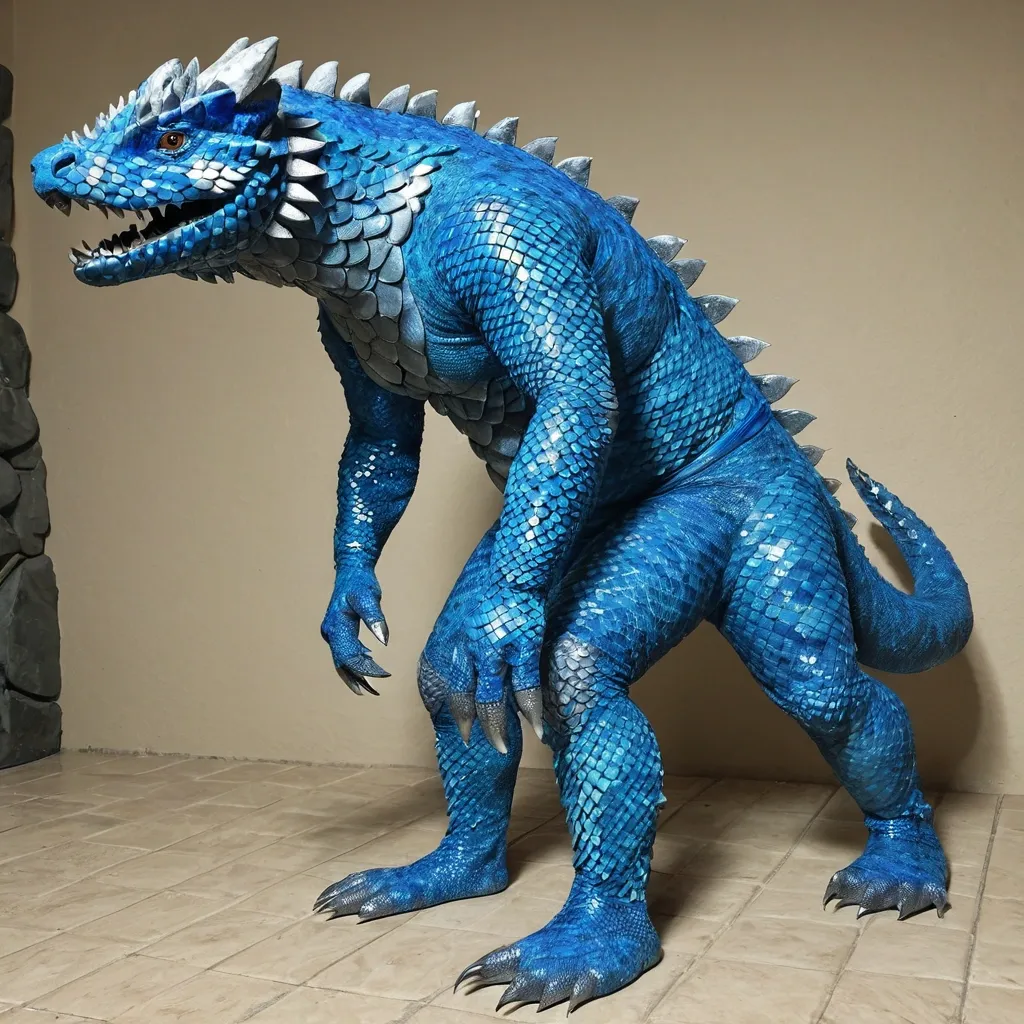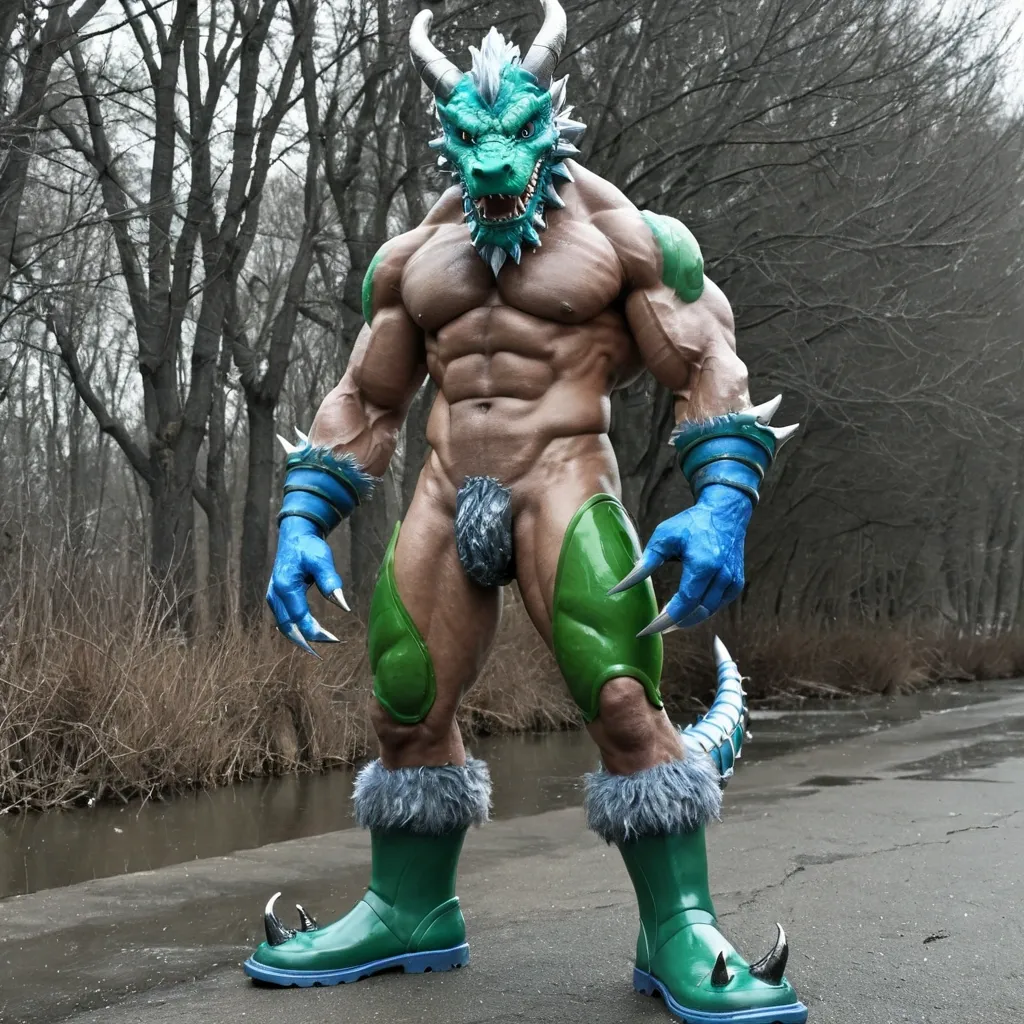AI Image Prompts for Dragon
Explore AI generated designs, images, art and prompts by top community artists and designers.


“Create multiple tattoo design concepts (each image a different concept) , small to medium size , inspired by Flamengo football club. Each design must feature only one main subject , chosen among: dragonfly , butterfly , flower , or feminine female figure (never combined in the same tattoo). The designs must be sensual , delicate and elegant , with fine line tattoo style. Use Flamengo’s colors red and black in a subtle and artistic way. The initials ‘CRF’ must be integrated naturally into the design (wings , petals , hair , or shapes) , refined and not aggressive. Feminine aesthetic , soft curves , minimalistic composition , clean background , tattoo-ready illustration.” ,

A Gorgeous female warrior , with long flaming wavy hair , mythical Excalibur and a massive mini-gun with gleaming barrels with intricate geometric patterns and iridescent shimmers , gracefully navigating through a swirling of fierce albino white dragon depicted in an Abstract graphic Interference style , with swirling dot lines patterns and dynamic light motion speed effects. The dots elements should create a sense of movement and energy. Employ a white color palette of sapphire white with iridescent shimmer. Full body shot from a low vantage point. dragon in the frame. ,

A whimsical spaceship , designed to resemble a giant , smiling dragonfly with metallic scales and steam-powered jets , navigates through a nebula that looks like a spilled pot of cosmic paint. The ship is adorned with ancient Mayan patterns and emits a trail of stardust. The scene is depicted with vibrant , surreal colors and a playful , almost humorous , digital art style , evoking the imagination of Moebius and the humor of Dr. Seuss. ,

A majestic , bioluminescent dragon soaring through a vibrant , swirling nebula that mimics the patterns of ancient Babylonian ziggurats. The dragon's scales shimmer with cosmic energy , and its eyes glow with celestial fire. The scene is rendered in a breathtaking digital art style , with a focus on ethereal lighting and intricate details , inspired by the fantasy art of James Gurney and the cosmic scale of Carl Sagan's 'Cosmos'. ,

A flowing , Giant dragonfly , rendered in intricate clockwork and brass gears , swims through an abstract nebula of swirling digital data streams. The dragonfly bending into impossible angles , complex mechanism of interconnected parts , with glowing LED eyes peering out from the cosmic dust: electric blues , deep purples at the top and edge , shifting into bright cyan. The head tilts gently downward , defined only by subtle curves and shadows formed by the color transitions. perfect whale breaching a vast , calm ocean. Style: Celestial , ethereal , abstract , digital art smoking: Dramatic backlighting , bright glowing particles , contrasting dark background Composition: dynamic diagonal composition , upward gaze Details: Sparkling white waves and smoke , streaking white light trails , sense of movement and wonder , magical atmosphere Quality: High detail , 4K , Masterpiece , Rendered in Octane ,

Fantasy on the theme inspired by helicopter fusion with dragonfly wings and a large one eye , appearing aged and worn out , has a prominent circular window emitting a glowing orange light , flowing pools raining down insignificant vegetation , mysterious , extreme clarity and depth --ar 9:12 --raw , ,

A vast ancient Eastern immortal cultivation sect spread across towering mist-shrouded mountains , shown in a wide panoramic landscape view. Countless temple complexes , layered pagodas , floating pavilions , and skybridges stretch horizontally across the scene , creating a sweeping , expansive vista. Massive cliffs , winding stone stairways , and suspended platforms extend left to right , emphasizing width. Dense rolling fog fills the valleys , lanterns glow softly through the mist , and drifting spiritual talismans light up the air. Ancient dragon statues and celestial beast carvings emerge faintly from the haze. Streams of glowing qi flow across the mountains like rivers of light. Dark storm clouds gather overhead , lightning crackling across the sky and illuminating floating mountains and distant immortal palaces. Disciples on flying swords and spirit beasts traverse the misty expanse. Cinematic panoramic framing , ultra-detailed environment , high-fantasy style , intricate architecture , dramatic lighting , widescreen landscape composition. —ar 16:9 ,

A vast ancient Eastern immortal cultivation sect hidden among towering mountain ranges covered in dense swirling mist. Endless temple complexes , pagodas , floating pavilions , spiritual towers , and skybridges stretch across the landscape , some built into the sheer cliffs , others suspended above abyssal clouds. The architecture is grand , weathered , and majestic—immense stone stairways , carved dragon pillars , curved roofs , and glowing talismans. Clusters of lanterns glow warmly through the fog , illuminating runic spiritual symbols drifting like fireflies. Giant statues of ancient sages and celestial beasts emerge faintly from the mist. Ethereal qi flows in streams throughout the scene , creating a sense of ancient power. A storm brews in the heavens—dark clouds swirling violently. Lightning crackles across the sky , dramatic bolts illuminating the vast sect and revealing hidden floating mountains and immortal palaces in the distance. Small flying boats , disciples in flowing robes , and spiritual beasts can be seen as silhouettes moving through the fog. Wide cinematic composition , ultra-detailed environment , sweeping aerial view , high-fantasy atmosphere. Hyper-realistic lighting , ancient mystical mood , breathtaking scale. ,

high-resolution photography , upper-body composition , front shot on 85mm portrait lens , depth of field , a indian mature man face , large and rimless goggles with iridescent teal pink reflective lenses , reflection in the goggles subtly shows a winter dragon composed of ethereal swirling Palette: Orange and yellow particles , wings wide and pale jade , floating weightlessly in an infinite monochromatic void , with delicate Orange gradient shadows casting soft luminescence across its serpentine form , a minimalist female warrior , perched precariously on the dragon's tilted nose , bokeh effect , bright natural daylight , sharp focus on the eyewear. ,

A massive spiral dragon composed of interlaced sand dust and arid soil , drifting in a boundless abstract void , with soft diffused shadows and a smooth gradient of black-ash hues. Delicate curved silhouettes define the dragon's form through subtle shadow transitions , with a gently tilted head. A minimalistic green-lined stick figure alien child sits on the dragon's nose , featuring empty , bewildered eyes capturing a sense of ethereal wonder , the entire scene rendered with a dreamlike , surreal atmospheric quality --ar 16:9 --stylize 800 --chaos 50 ,

A sprawling **steampunk cityscape** dominated by towering brass-and-copper skyscrapers , their gears and pistons exposed like mechanical veins , belching plumes of thick , golden steam into a perpetually twilight sky. Airships with patched canvas hulls and whirring propellers drift lazily between the buildings , their wooden gondolas adorned with flickering gas lamps and intricate filigree railings. Below , a labyrinth of cobbled streets winds between market stalls selling clockwork trinkets , hissing pneumatic tubes , and jars of glowing alchemical liquids in eerie blues and greens. Goggled engineers in leather aprons tinker with half-assembled automatons , their tools scattered across workbenches cluttered with blueprints and rusted cogs. In the foreground , a grand **central plaza** features a colossal , steam-powered fountain—its water spouting from the jaws of a mechanical dragon , its bronze scales gleaming under the dim glow of arc lamps. The plaza is bustling with life: top-hatted gentlemen adjust their pocket watches , corseted inventors argue over schematics , and street urchins dart between legs , selling stolen gears from their satchels. Above it all , a **massive clock tower** looms , its face cracked and hands moving erratically , as if time itself is unraveling in this city of brass and dreams. The art style blends **hyper-detailed linework** with a **gritty , textured aesthetic**—every surface shows signs of wear , from the tarnished metal of the airships to the scorch marks on the factory smokestacks. The lighting is **moody and dramatic** , with deep shadows cast by the flickering gaslights , while the steam diffuses the glow into an ethereal haze. The color palette is rich yet muted—**burnished coppers , deep browns , and aged brass** dominate , punctuated by the occasional flash of **emerald-green alchemy** or **ruby-red warning lights**. The composition should feel **immersive and alive** , as if the city itself is a living , breathing machine. ,

A colossal , ancient dragon with scales like shimmering nebulae and eyes like distant galaxies , coiled around a celestial observatory perched on a floating island. The aurora borealis dances in the background , casting ethereal light on the intricate , brass astronomical instruments. The style is a blend of grand fantasy concept art , reminiscent of artists like John Howe and Alan Lee , with a touch of cosmic horror and the detailed rendering of Unreal Engine. ,

Terminator art deco movie poster , Brian Sum , art by Joseph-mallord William Turner , hive , De-Noise , Wide-angle shot , art by Henri Matisse , art by Magdalena Carmen Frida Kahlo Claderón , voronoi pattern , art by Sir Peter Paul Rubens , art by Hilma Af Klint , art by Eugène Delacroix , levying a path of clouds behind her. Dragon ball z style high detailed anime tv show , adorable , art by Leonardo Da Vinci , Brian Sum , octane render , Bokeh blur , art by Albrecht Dürer , symmetrical face ,

A Dragon lay-down on a rocky mountain cliff , viewed from behind. The Dragon is created in a double exposure style , blending seamlessly with a breathtaking winter mountain landscape at sunrise. Inside the silhouette of the Dragon , a snowy forest with tall pine trees , mist , and warm sunlight breaking through the peaks is visible. The outer background shows snowy alpine mountains , dramatic skies , and rugged terrain. The overall atmosphere is cinematic , surreal , and awe-inspiring. Ultra-realistic , highly detailed , moody tones. ,

A female Na'vi , the indigenous humanoid species of Pandora , riding a massive black dragon , in motion , captured with a slow shutter for dynamic motion blur. High contrast , minimalist composition with no logos or text. snowy mountain range background , abstract , and energetic. Editorial style reminiscent of SpaceX advertising or street photography. ,

3D ultra-realistic cosmic illustration showing an enormous swirling mass of smokeless fire—bright orange , blue , with dragon face flames twisting in a spiral. The fire floats in the dark cosmic void , glowing with supernatural energy. No smoke , no ashes—just pure blazing flame forming a powerful elemental core. Soft divine light shines from above illuminating the fire. Style: Celestial , ethereal , abstract , digital art black Lighting: Dramatic backlighting , bright glowing particles , contrasting dark background Composition: dynamic diagonal , composition , upward gaze Details: Sparkling white waves and smoke , streaking white light trails , sense of movement and wonder , magical atmosphere Quality: High detail , 4K , Masterpiece , Rendered in Octane. ,

Bird's eye view , a massive purple-scaled dragon dominates the sky above a burning town. Its wings stretch wide , torn and weathered , scattering fragments of debris as it descends. The dragon’s head leans forward with an intense , predatory focus; its eyes glow with a hot yellow hue while flames burst upward beneath it. A spatial battle with interstellar starships caught in an elements storm , with debris vortex and dust trails , Below a floating bridges of glowing crystal spanning across alien mountains , with surreal atmosphere , post apocalyptic , rocky ocean shore , post apocalyptic , rocky ocean shore , sci-fi style , space opera style , fantasy style. Warm Brown , Toffee Caramel , Frosted Blue and Pale Mist. ,

Here's the 3D big head caricature of the Indian man , this time waving from a dragon flying over futuristic vertical garden city where crystalline skyscrapers spiral toward purple storm clouds , its delicate antennae transmitting golden light beams that nurture floating botanical platforms teeming with bioluminescent flowers and cascading waterfalls that shimmer in the perpetual twilight of this utopian sky realm. ,

ultra photorealistic portrait of a colossal European dragon perched on a jagged Himalayan summit , golden hour lighting , insane details , 8K , shot on Phase One XF IQ4 150MP camera with 80mm lens , f/1.4 aperture , professional mountain photography , National Geographic style , hyperdetailed scales with individual micro-textures , iridescent sheen on each scale like viper skin , dragon anatomy based on paleontological accuracy with pterosaur wings membrane showing visible veins and weathered tears , muscular hind legs gripping granite with razor-sharp talons creating stress fractures in the rock , sinuous neck coiled like a constrictor , intelligent amber eyes with vertical slits reflecting distant storms , smoke wisps from nostrils condensing in cold air , frost accumulating on dorsal spikes , wing membranes translucent at edges showing bone structure , mountain is Annapurna III during alpenglow with visible glacial crevasses and seracs , dynamic snow particles whipped by high-altitude winds , lenticular clouds forming around peaks , color palette: deep ultramarine shadows , molten gold highlights , titanium white snow , chromatic aberration on wing edges , subsurface scattering on scales , micro-displacement mapping , 16-bit depth , global illumination , ray-traced reflections , volumetric lighting through mist , CGSociety masterpiece , ArtStation trending , hyperrealism by Luis Royo + Marc Simonetti + WLOP , extreme negative space composition , rule of thirds with dragon at lower intersection point , epic scale emphasis through environmental storytelling , EXIF metadata visible , shot at 5000m altitude with visible atmospheric perspective , subtle chromatic aberration , film grain , lens flare from sun behind dragon's silhouette , --ar 16:9 --style raw --v 6.0 --s 750 --q 2 ,

Warcraft / World of Warcraft icon style , ability "Sea Magic" , 4 icons in a 2x2 grid: 1) a simple , damp , leather-bound book with a faint , scratched Kul Tiras anchor symbol on a gray background; 2) a well-crafted grimoire with a clear , polished silver Kul Tiras crest glowing with soft blue aquatic magic on a blue background; 3) a legendary , ornate tome with a golden Kul Tiras dragon anchor , radiating warm orange and yellow light as if containing the power of the sea itself on a red-orange background; 4) an epic , ancient book of dark driftwood with a large , glowing violet Kul Tiras sigil , wreathed in crackling purple arcane energy and swirling with deep-sea power on a deep purple background , cinematic , high detail , iconic blizzard style , game asset. ,

A powerful dragon , its scales shimmering with iridescent hues , guards a hidden portal to another dimension. The portal crackles with raw magical energy , casting ethereal light on the surrounding ancient ruins. The scene is depicted in a rich , detailed fantasy art style , with a magical atmosphere reminiscent of the works of Todd Lockwood and Donato Giancola. ,

A dramatic scene featuring a woman and a dragon. The woman , with long , flowing , dark black hair cascading down her back , stands on a rocky , snowy terrain. She is dressed in a long , flowing white gown , which contrasts vividly with the icy surroundings , suggesting a sense of warmth and life amidst the cold. The gown's texture appears smooth and luxurious , made of a fabric that drapes elegantly around her figure. The Mosquito , a colossal creature with intricate , Tiger-scales that shimmer in the light , dominates the scene. Its scales are detailed with a rough , textured appearance , giving it a realistic , almost reptilian look. The Mosquito's eyes are a piercing yellow , and it appears to be looking down at the woman with a sense of curiosity or contemplation. The Mosquito's face is detailed with wrinkles and creases , adding to its aged , wise appearance. ,






